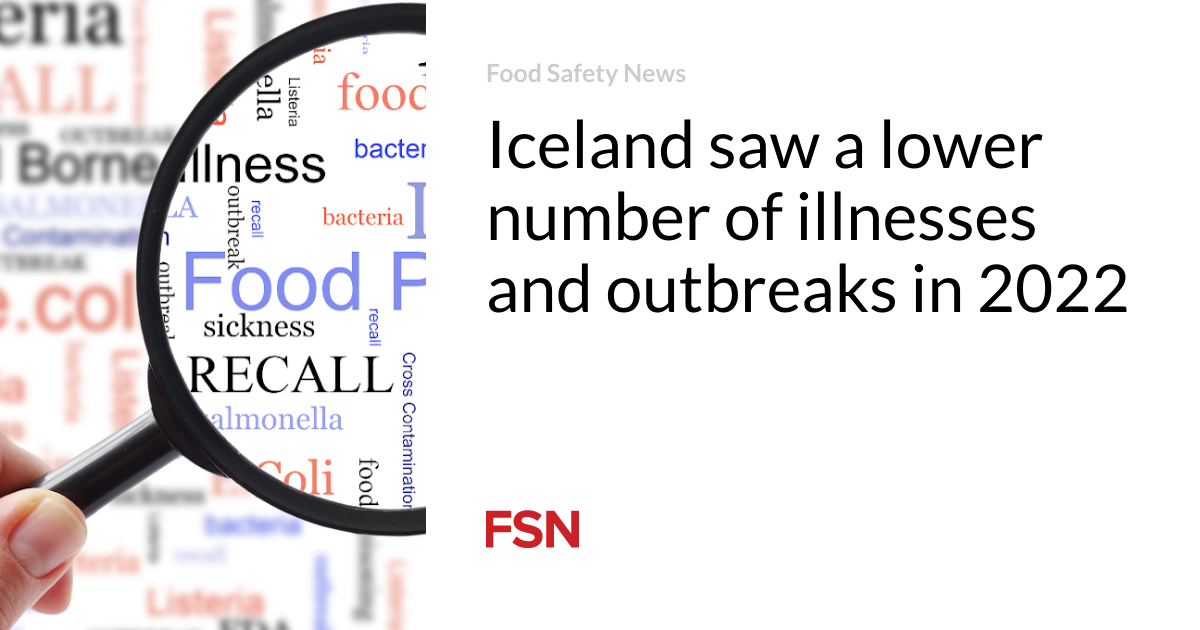Infection
Iceland saw a lower number of illnesses and outbreaks in 2022
Icelandic officials have published data on the number of confirmed foodborne infections and outbreaks in the country in 2022.
Iceland recorded four infections caused by E. coli. This included three children aged between 0 and 10 and one adult in their 60s. Three infections were of foreign origin, while one was believed to be domestic. Six cases were reported in 2021, according to a report from the Directorate of Health (Embætti landlæknis).
A total of 104 people were diagnosed with Campylobacter infections in 2022. Slightly more than half of the infections were of foreign origin, which is similar to previous years, except for 2020 and 2021, when there was less international travel due to the COVID-19 pandemic. Under 60 cases were recorded in 2021.
Salmonella and Listeria statistics
A total of 42 people with 43 Salmonella types were detected in 2022. One person was diagnosed with two types of Salmonella.
Fourteen were of domestic origin, 22 were of foreign origin, and this information was unknown for six cases. The most common serotypes during 2022 were, as in past years, Salmonella Enteritidis and Salmonella Typhimurium. More than 50 infections were noted in 2021.
Two people were diagnosed with listeriosis, and one of them died. One sick person was in their 70s, and the other was in their 90s.
In one case, Listeria was grown from smoked salmon that the person had consumed, but sequencing did not confirm that it was the same strain in the patient as in the fish. Five cases were recorded in 2021.
One person in their 80s was sick with an infection caused by Yersinia enterocolitica, compared to four patients in 2021.
Five people were diagnosed with a parasitic infection in the country. One child under the age of one and four adults aged 18 to 59. The source of infections is not known. There was also one case of Hepatitis A compared to two infections in 2021.
Recorded outbreaks
Four foodborne outbreaks were reported in 2022. Two were caused by norovirus, one by Enteropathogenic E. coli (EPEC), and the pathogen was unknown for the other.
In spring 2022, there was a report of illness among guests at a restaurant. The illness started two to three days after the meal with fever, nausea, and vomiting that lasted for about a week. Identifying which pathogen caused these symptoms or tracing the infection to the consumption of certain foods was impossible.
In total, 93 people fell ill in two separate incidents caused by norovirus in the autumn. The epidemic involved guests at a party who had home-cooked meals as well as colleagues who had consumed leftovers from the same event at the workplace. Another 47 people also fell ill after eating meals delivered at work. However, officials were not able to trace the source of infections to a certain point.
In late 2022, 12 people fell sick after a meal at a restaurant. The main symptoms were abdominal pain, fever, and diarrhea that lasted up to a week—microbiological analysis from some of those who became ill-identified enteropathogenic E. coli (EPEC). However, no pathogens were detected in samples taken from food.
(To sign up for a free subscription to Food Safety News, click here.)

